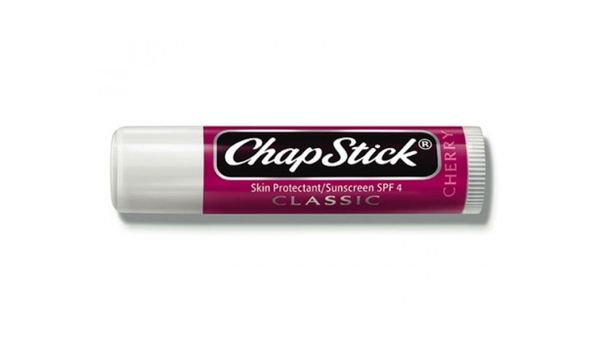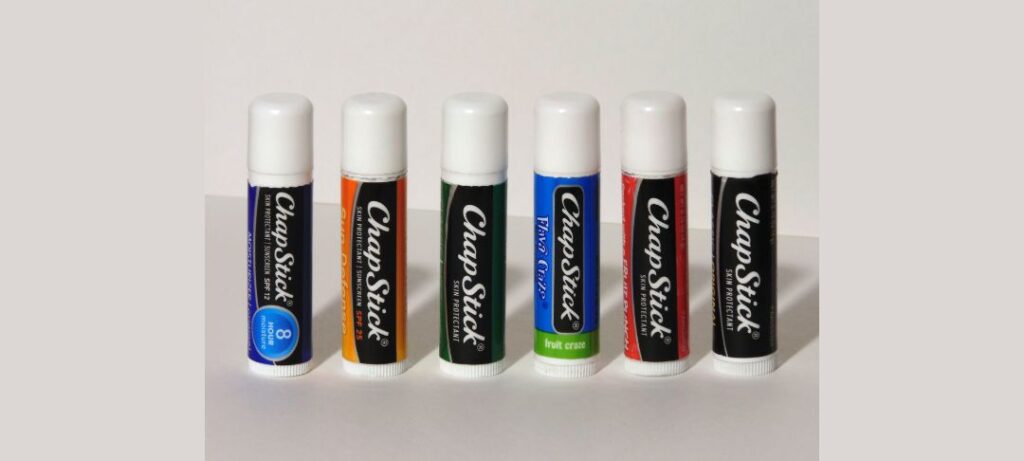When it comes to flying, there are a number of restrictions and guidelines that travelers must follow. One of the most important of these is the 3-1-1 rule for liquids in carry-on bags, which limits the number of liquids that can be brought onto an airplane. But what about products that don’t fit neatly into the category of a liquid or a solid? One common item that often raises questions is Chapstick. Is Chapstick considered a liquid when flying? And if so, what are the restrictions and guidelines that apply?
In this blog post, we’ll take a closer look at Chapstick and the rules and regulations surrounding it. We’ll explore the nature of Chapstick, how it is packaged for travel, and how it is treated by both the TSA and airlines. Whether you’re a frequent traveler or simply someone who wants to be prepared for your next flight, this post will provide you with the information you need to know about flying with Chapstick.
TSA Liquid Restrictions
The Transportation Security Administration (TSA) has strict guidelines in place when it comes to liquids in carry-on bags. The 3-1-1 rule states that all liquids, aerosols, gels, creams, and pastes must be placed in a clear, quart-sized plastic bag and placed in a passenger’s carry-on bag. Each passenger is limited to one such bag per item, and items must be placed in a single, quart-sized, clear plastic, sealable bag for inspection.
In general, a liquid is defined as any item that is pourable and takes the shape of its container. This includes items such as shampoo, lotion, and mouthwash. However, there are some exceptions to the 3-1-1 rule, including medication, baby formula and food, and breast milk. These items are allowed in larger quantities and do not have to be placed in a quart-sized bag.
The restrictions for liquids in checked bags are more lenient, but it’s still a good idea to exercise caution. For example, items such as wine or other alcohol must be placed in a checked bag, but can only be carried in limited quantities. Passengers should also be aware that certain countries have their own restrictions on liquids and other items in both carry-on and checked bags.
The Nature of Chapstick

Chapstick is a semi-solid product that is used to moisturize and protect the lips. It is typically made up of a blend of waxes, oils, and moisturizing agents, and is available in a variety of formulas and flavors. The consistency of Chapstick can vary depending on the formula and the temperature, but it is generally thicker and dense than a liquid.
Despite its semi-solid state, Chapstick can take on a more liquid-like form if it is exposed to high temperatures. This is why Chapstick is often stored in cool places and should not be left in a hot car or other warm location for an extended period of time.
In terms of chemical composition, Chapstick is similar to other semi-solid personal care items such as lip balm, lip gloss, and lip tint. These products all serve the same basic function of moisturizing and protecting the lips, but they differ in terms of consistency, ingredients, and intended use.
How Chapstick is Packaged for wwwTravel
Chapstick is typically packaged in a small, cylindrical tube that is easy to carry in a purse or pocket. The standard size for Chapstick is typically around 0.15 ounces, which is well within the TSA’s size restrictions for liquids in carry-on bags.
However, there are also travel-sized Chapstick options available that are even smaller and more convenient for travelers. These travel-sized Chapsticks are designed to fit comfortably in a pocket or a small bag, and they are also less likely to leak or become damaged during transit.
Some Chapstick brands also offer multi-packs of their products, which are a great option for frequent travelers who need to have Chapstick on hand at all times. These multi-packs often include several tubes of Chapstick in different flavors or formulas, making it easy to switch things up and find the perfect Chapstick for any occasion.
Despite its small size, Chapstick can still pose a problem for travelers in terms of TSA restrictions. If a Chapstick is exposed to high temperatures, it can become more liquid-like and may need to be placed in a quart-sized plastic bag for inspection. This is why it’s important to be mindful of how Chapstick is stored and transported, especially when traveling by air.
How Chapstick is Treated by TSA
The Transportation Security Administration (TSA) is responsible for ensuring the safety of passengers traveling by air. One of the ways they do this is by enforcing strict rules regarding the items that can be brought onto an aircraft. When it comes to Chapstick, the TSA considers it a semi-solid, not a liquid. This means that it is not subject to the same restrictions as liquids when it comes to packing and carrying it on a flight.
However, the consistency of Chapstick can sometimes make it difficult to determine whether or not it should be considered a liquid. This is why the TSA has established specific guidelines for packing Chapstick for air travel. If a Chapstick is exposed to high temperatures, it can become more liquid-like, and the TSA may consider it a liquid. In this case, the Chapstick will need to be placed in a quart-sized plastic bag for inspection.
It’s important to note that the TSA reserves the right to inspect any item, regardless of whether or not it is considered a liquid. This means that even if a Chapstick is considered semi-solid, it may still be subject to inspection. Travelers are advised to pack Chapstick in their carry-on bag, rather than in their checked luggage, to ensure that it remains accessible during the flight.
How Chapstick is Treated by Airlines
Each airline has its own rules and regulations regarding what items are allowed on its flights. Some airlines may consider Chapstick to be semi-solid, while others may classify it as a liquid. It’s important to check the specific guidelines of each airline before traveling to avoid any potential issues. For example, some airlines may allow Chapstick in carry-on bags but may have restrictions on the size of the Chapstick container. Other airlines may only allow Chapstick in checked luggage or may require that it be placed in a quart-sized plastic bag for inspection. It’s also important to consider the climate and conditions of the flight when traveling with Chapstick. For example, if the cabin temperature is very high, Chapstick may become more liquid-like, which could result in restrictions or inspection.
Best Practices for Flying with Chapstick
To ensure a smooth and stress-free flying experience when traveling with Chapstick, there are several best practices that travelers can follow. These include:
- Pack Chapstick in your carry-on bag: This will ensure that it remains accessible during the flight and will also minimize the risk of it becoming damaged or leaking in your checked luggage.
- Check the guidelines of your airline: Before traveling, be sure to check the specific guidelines of your airline to determine what restrictions they may have on Chapstick.
- Store Chapstick in a cool, dry place: This will help prevent Chapstick from becoming more liquid-like, which could result in restrictions or inspection.
- Pack extra Chapstick: If you are traveling for an extended period of time, it’s a good idea to pack extra Chapstick, in case your original Chapstick becomes damaged or is lost during travel.
- Consider using a travel-sized Chapstick: Many Chapstick brands offer travel-sized options that are designed to be more convenient for travelers. These small Chapsticks are less likely to leak or become damaged during transit.
How Chapstick is Treated at Airports Outside of the United States
While the TSA has specific guidelines for how Chapstick is treated in the United States, airports outside of the country may have different rules and restrictions. Travelers are advised to research the specific policies of each airport before traveling to ensure that they are in compliance with local regulations. Some countries may classify Chapstick as a liquid, while others may consider it semi-solid. Some airports may also have restrictions on the size of Chapstick containers or may require that they be placed in a clear plastic bag for inspection. Additionally, it’s important to consider the climate and conditions of each country when traveling with Chapstick. For example, if a country has a warm and humid climate, Chapstick may become more liquid-like, which could result in restrictions or inspection. It’s also important to note that each airline may have different policies for how Chapstick is treated, regardless of local regulations. For example, an airline may allow Chapstick in carry-on bags but may have restrictions on the size of the Chapstick container. To ensure a smooth and stress-free traveling experience when traveling with Chapstick outside of the United States, travelers are advised to:
- Research the specific policies of each airport and airline before traveling.
- Pack Chapstick in a clear plastic bag, if required.
- Consider using a travel-sized Chapstick to minimize the risk of restrictions or inspection.
- Store Chapstick in a cool, dry place to prevent it from becoming more liquid-like.
- Pack extra Chapstick in case of damage or loss during travel.
By following these best practices, travelers can feel confident and prepared when flying with Chapstick outside of the United States.
Conclusion
In conclusion, Chapstick is considered semi-solid and not a liquid by the TSA. However, its packaging and consistency can make it subject to the same restrictions as liquids in certain situations. Understanding the nature of Chapstick and how it is packaged for travel can help travelers make informed decisions and avoid any potential problems when flying. Whether you’re a frequent traveler or simply someone who wants to be prepared for your next flight, this information is essential to know when flying with Chapstick. So pack your Chapstick with confidence and have a safe and enjoyable flight!
